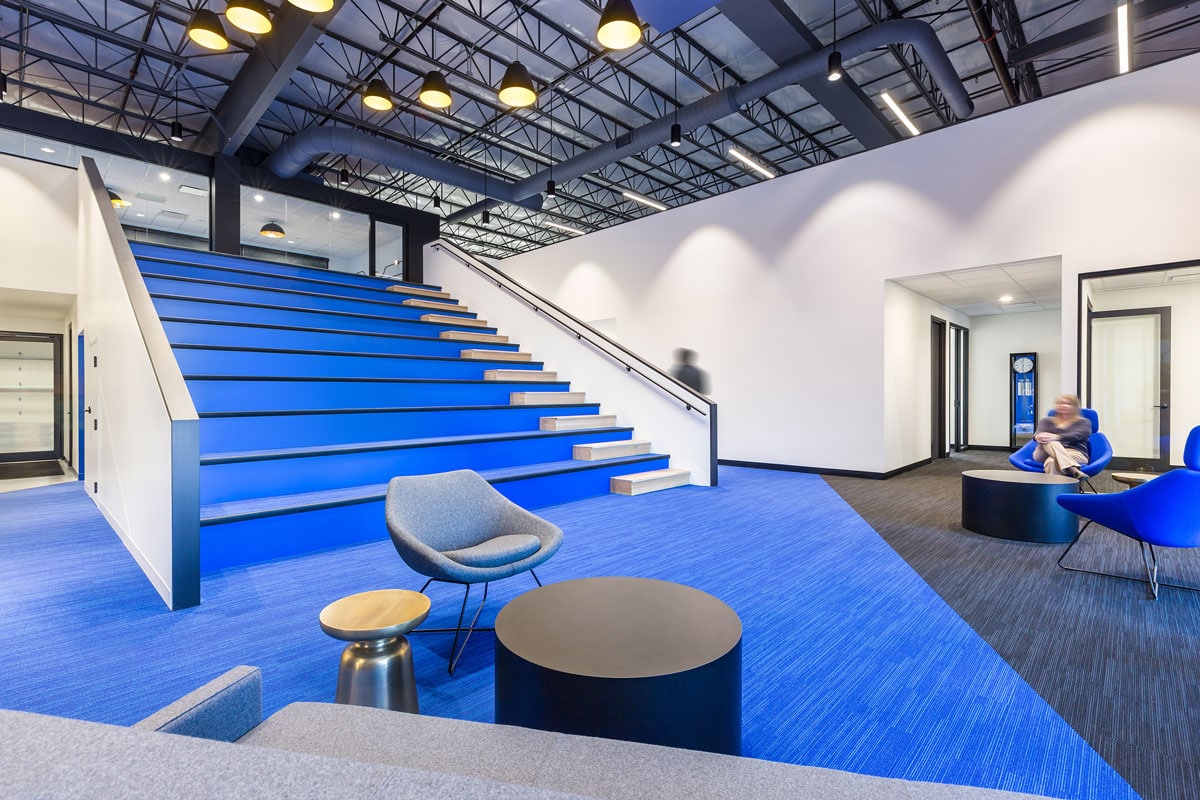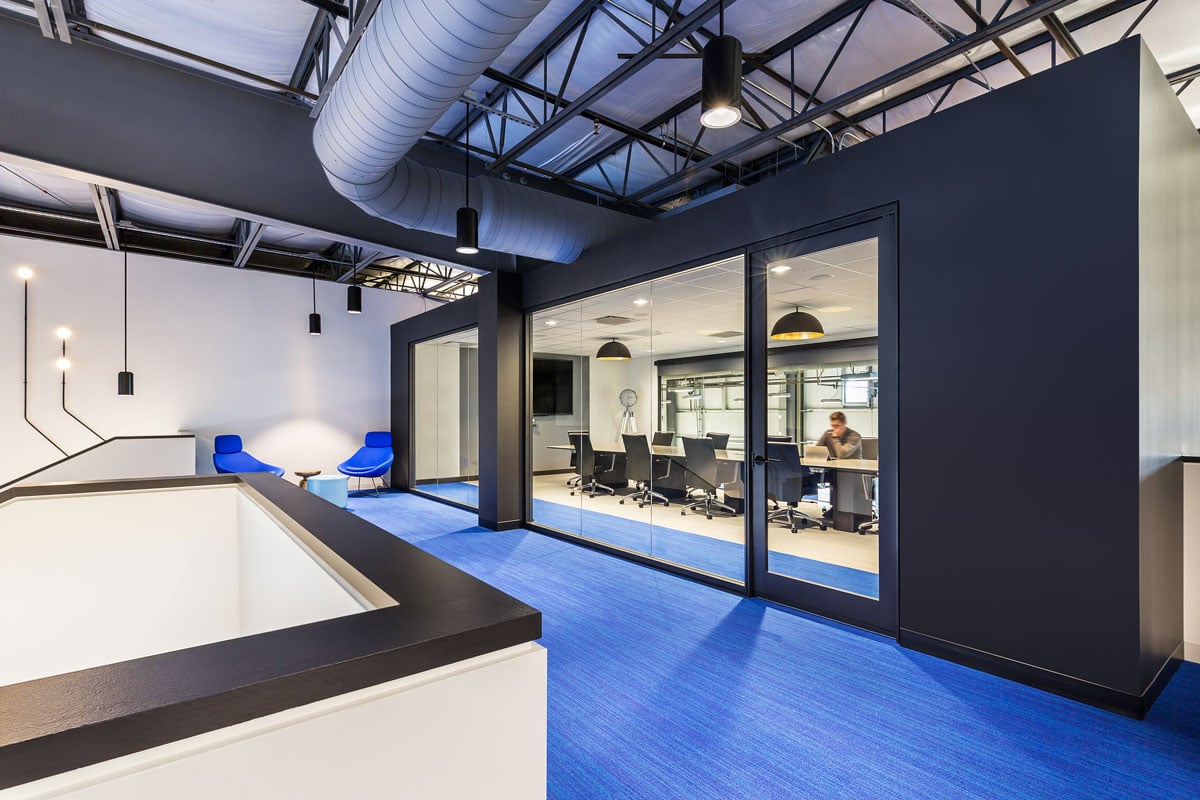
[Photo: Courtesy of Hufft]
In Lenexa, Kansas, the headquarters of ECS International—a manufacturer of frequency control microchips—reflects the product the company creates. Imagined by the design team at Hufft, the look and structure of the ECS office was inspired by microtechnology. Custom carpet patterning, glass wall partitions, and exposed lighting conduit create the effect of a life-size circuit board, promoting free flows of communication and energy.
At the core of the office is an open gathering space with stadium seating where company meetings, client events, and large-scale demonstrations take place. Architect Jeff Kloch says the completed design “pulled more staff into a shared workspace, created multiple gathering areas to accommodate an array of meeting sizes and styles, and improved warehouse processes and capacity.”
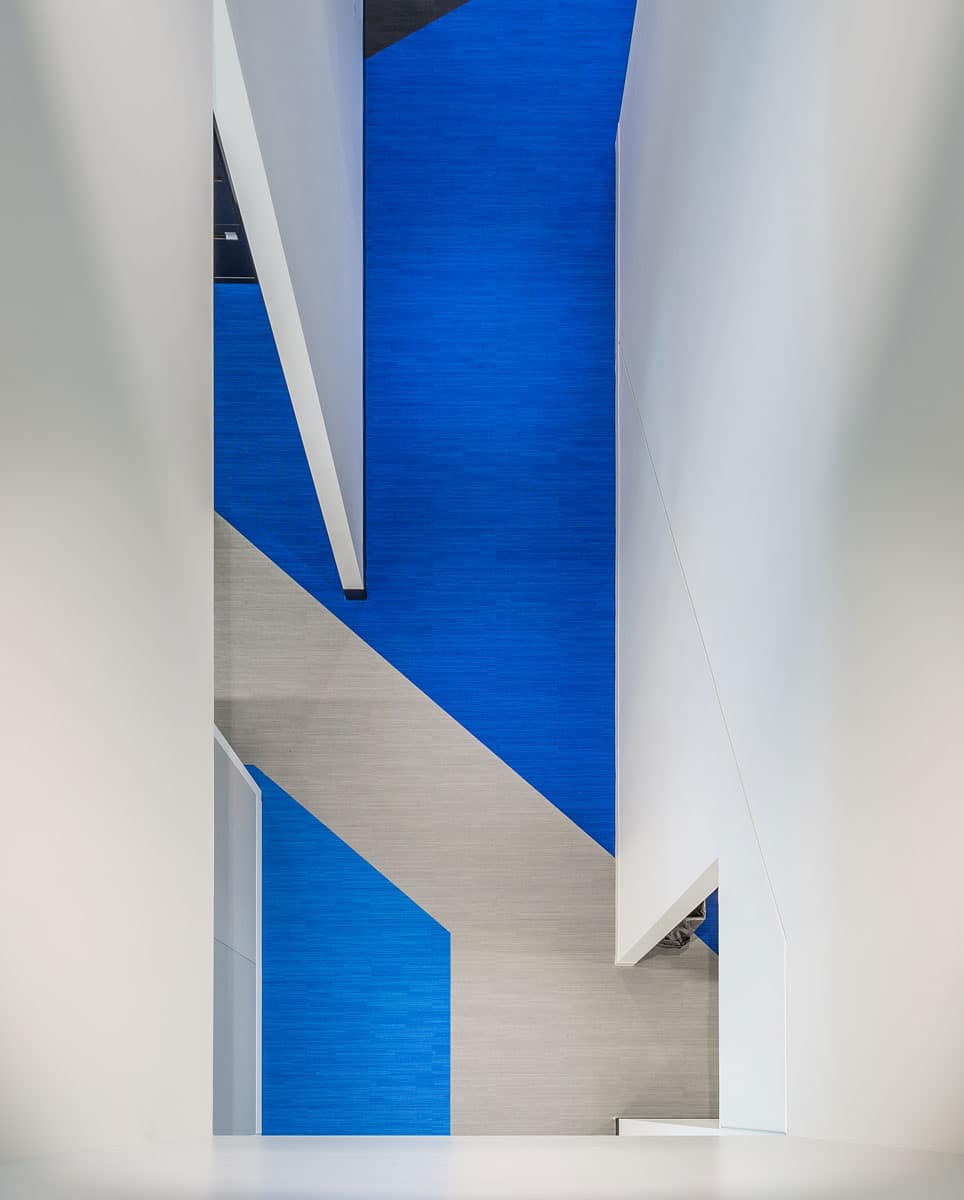
[Photo: Courtesy of Hufft]
gb&d: What does it mean to present a “future-focused identity?”
Kloch: With the company being in microchip processing technology, they basically are producing a product that takes all of us into the future. We wanted to be sure their forward-focused and high-tech identity was reflected in their space.
gb&d: What were your biggest priorities going into the design of the ECS office?
Kloch: The client wanted a space that they were proud of and, more importantly, that their team was proud to come and work in every day. They wanted a space that directly reflected who they are—honoring this and achieving their goals was our biggest priority.
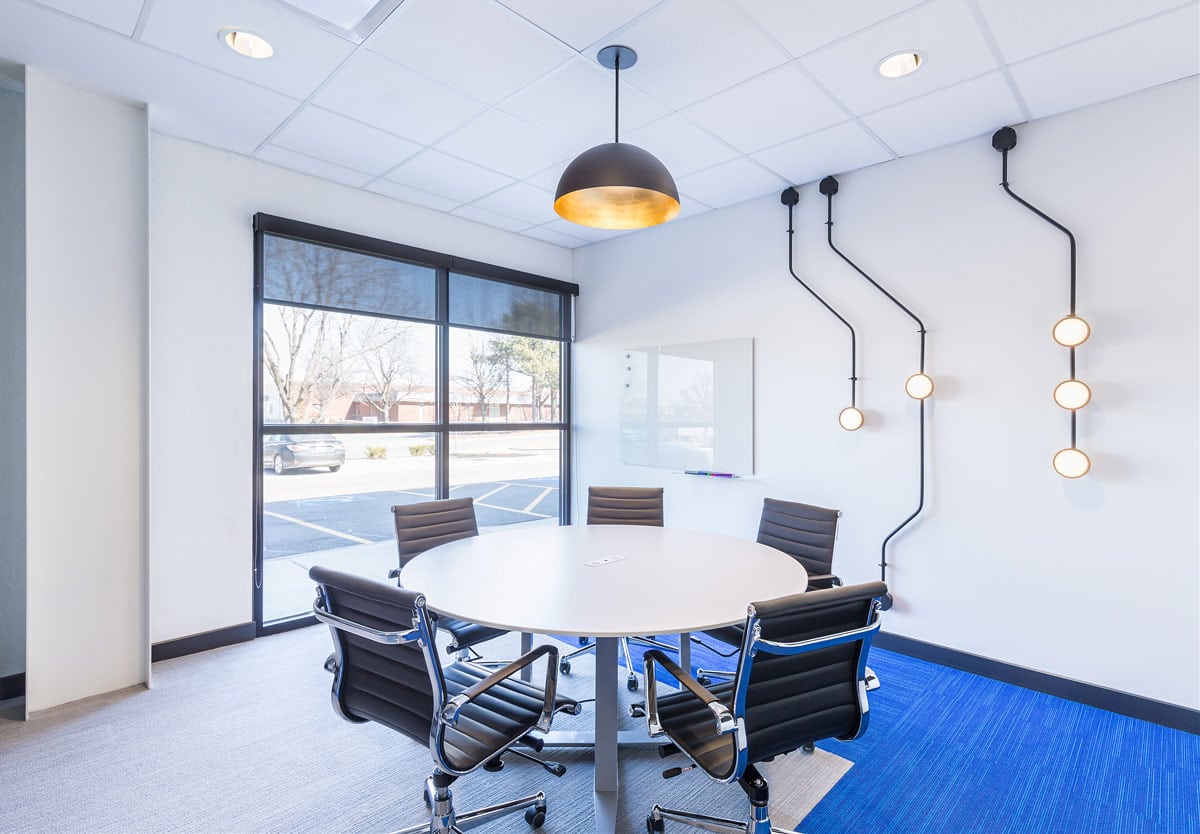
[Photo: Courtesy of Hufft]
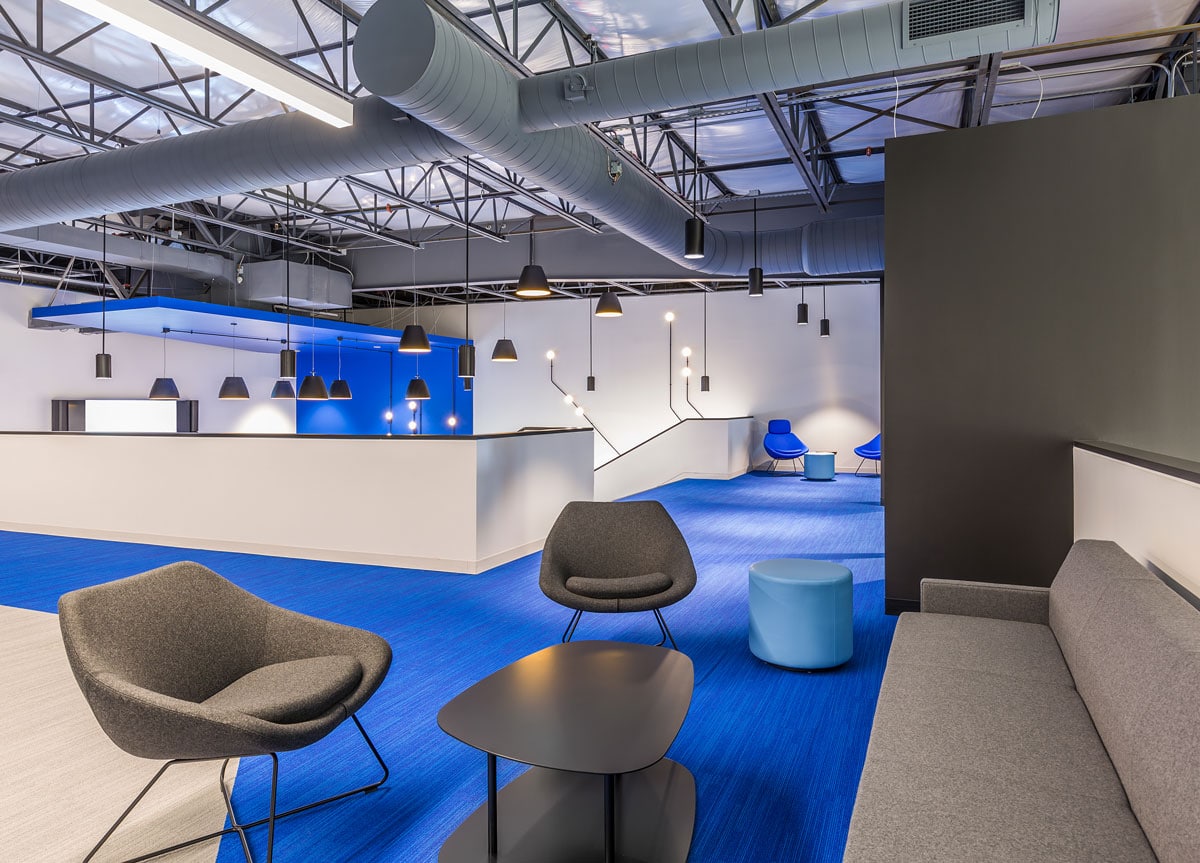
[Photo: Courtesy of Hufft]
gb&d: What was exciting to you about designing a workplace for this company?
Kloch: They fully believed in the power of design to achieve their desired results. That is a great way to begin a project. They also hired us to complete their construction build-out, which allowed us to be turnkey and deliver outstanding results.
gb&d: How was environmental sustainability incorporated into the design of the office?
Kloch: All of the resources were streamlined to yield the most efficient process, such as sourcing products near the location. Understanding the appropriate lighting and circulation of the space was a factor in creating a well-used space. We implemented everything that today seems the “norm” in sustainable design with regards to water usage and daylighting.
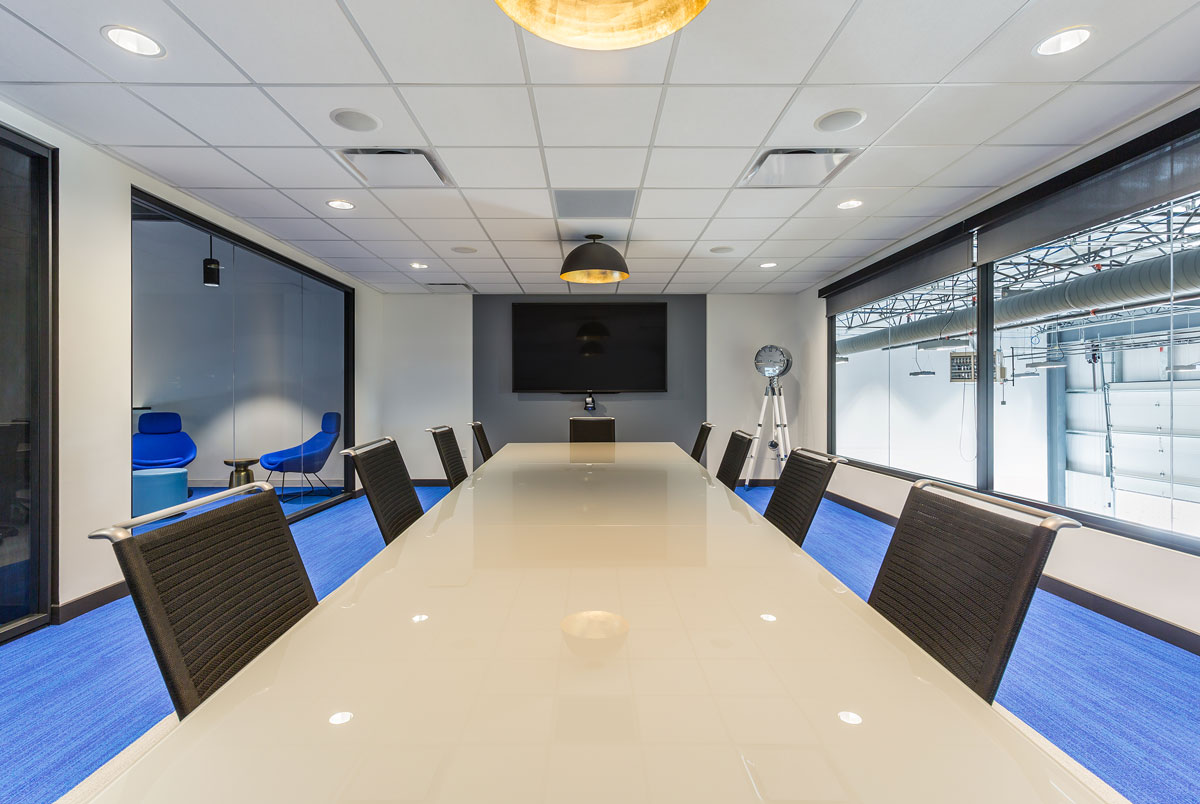
[Photo: Courtesy of Hufft]
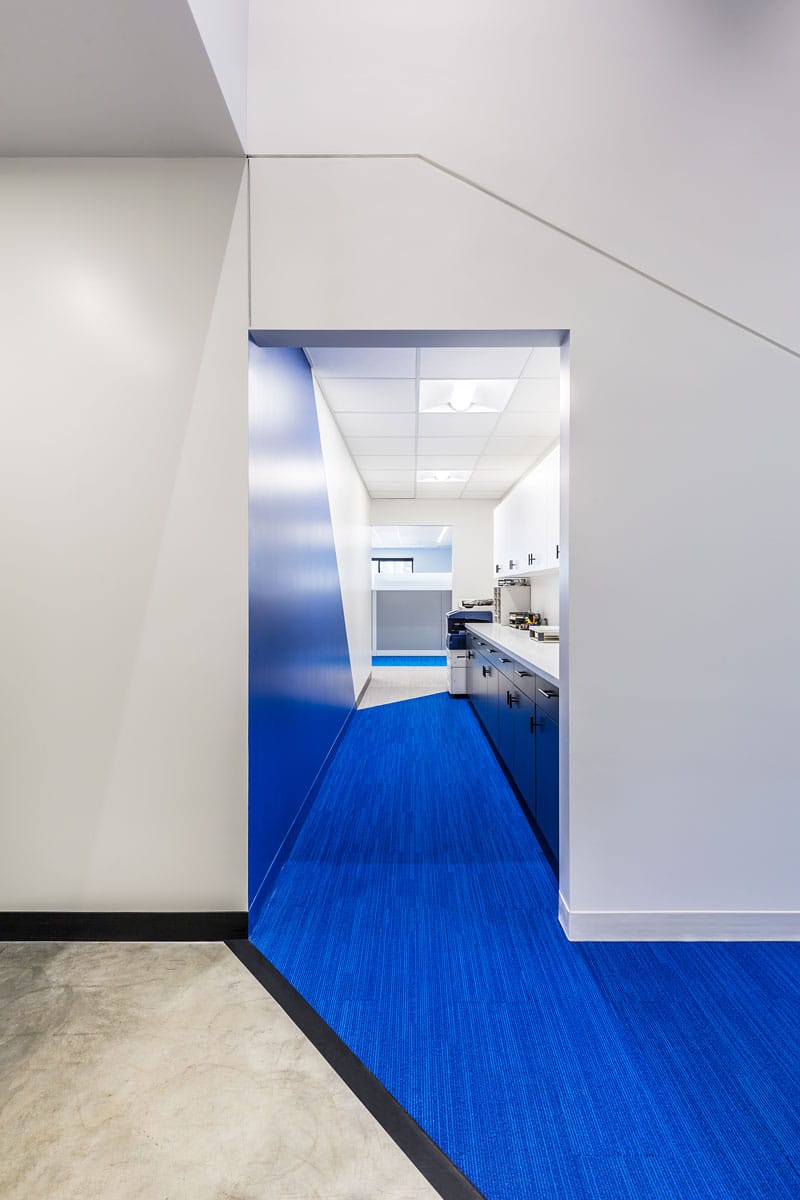
[Photo: Courtesy of Hufft]
gb&d: What was this project’s biggest challenge?
Kloch: Meeting the client’s budget and timeline were the greatest challenges.
gb&d: What are the most important elements of a well-designed workplace?
Kloch: From the start you must know who is intended to use the space and how they will use it. Understanding what success looks like for the actual people that will be utilizing the workplace will drive the design elements necessary. Knowing how to anticipate needs and make decisions through the use of design details will create a high functioning and well designed workplace. Lighting is key to productivity, correct circulation for collaboration and best use of space are elements that came into play for this project.

